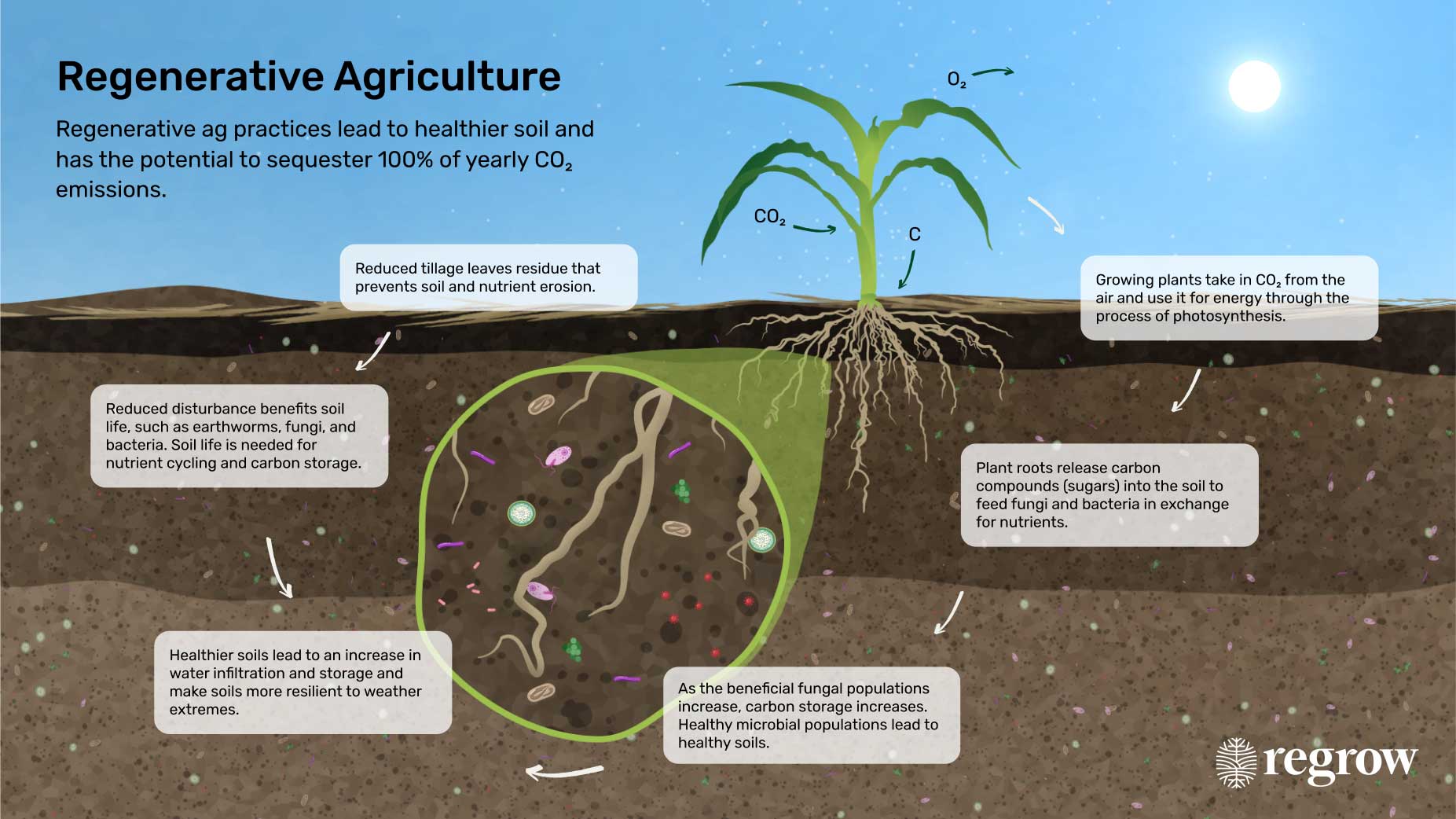The power of carbon in soil
There is so much talk of carbon these days. The reason you’re reading this is because you’re part of a program focused on helping you capture more carbon in the soil on your farm. Understanding carbon’s role and movement in soil can help guide your practices.
To begin with, the element carbon is the fundamental building block for all life. While soil aggregates may not be alive, soil does provide all the fundamental components to support life. That includes the basic needs that sustain our society: food, fuel, and fiber.
Most carbon is stored in reservoirs, which we also call “sinks,” either in the soil (as minerals, sediments such as fossil fuels, and soil organic matter), the air (as CO2 or other gasses), or living organisms (in microorganisms, insects, and animals). The planet works hard to keep these sinks at consistent levels. The total amount of carbon on the planet is the same, but where and how quickly it gets there changes.
Carbon in the atmosphere
Soil carbon escapes into the air, and we are finding increasing amounts in our atmosphere, which causes disruptions to typical weather patterns. Major weather events have a history of disrupting the food supply chain, causing extensive flooding along the Mississippi, increased hurricanes along the gulf and east coast, and extreme drought through the central United States.
Farming in the face of these disruptions may not be sustainable, and we need to equip ourselves to be more resilient to these extremes. That’s where you come in. Farmers are one of society’s best assets for combatting these extremes. And when you take steps to preserve carbon in the soil, you also prepare yourself to be more profitable and resilient.


Why tillage matters
Starting with photosynthesis, plants take in CO2 from the atmosphere, convert it using energy from the sun, into sugars and other carbon-based molecules, and release oxygen. The molecules produced by the plant are then used to build plant tissues and feed microbes in the soil to help source nutrients for the plant. When microbes and plants die, they break down over time and build soil organic carbon. This is where nutrients are stored and accessed by living microbes to feed plants.
When the soil is tilled, these microbes are exposed to oxygen, and they break down more carbon in a flurry of activity called respiration, creating a flush of available nutrients. However, this also drastically increases the amount of CO2 produced and allows for soil carbon to escape into the atmosphere more quickly.
Reducing or eliminating tillage to prevent this from happening keeps soil carbon cycles in check and prevents excess nutrients and carbon from being wasted. When considering your farm practices, it helps to think about how and when soil carbon flows from one place to another. This can help guide your decisions.

Anna Teeter
Anna Teeter is a Conservation Agronomist with the Cargill RegenConnect™ program. Her goal is to help farmers successfully implement soil health practices while continuing to advocate for agriculture. Anna brings extensive hands-on experience having worked with the University of Wisconsin-Madison extension services, private ag consulting services, and most recently the Soil Health Partnership, which led her to Cargill. She has a Bachelor of Science in Agronomy and Life Sciences Communications from the University of Wisconsin-Madison and a Masters of Science in Soil Science.
